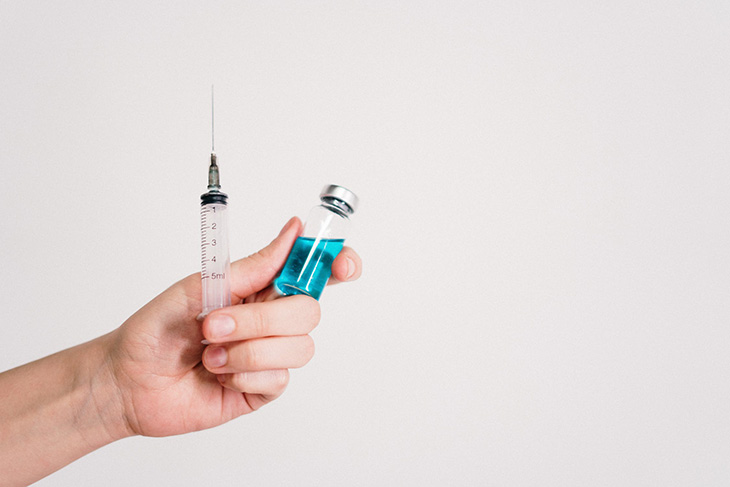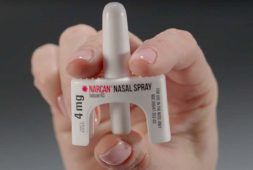
Currently, there are many branded and generic cancer drugs that are in short supply. As a result, many patients have been treated using less-effective medications while others have actually died while having to wait for the right medication to be available on the market again.
According to the U.S. Food and Drug Administration (FDA), the injectable drug, Pluvicto, used for advanced prostate cancer, as well as cisplatin, fluorouracil, and methotrexate – all chemotherapy drugs used to target a variety of cancers – have become scarce. Moreover, a fifth medication, BCG, which is used to treat bladder cancer, is also slowly dwindling, says the University of Minnesota.
When patients undergo a delay in their cancer treatment, even those that are just a few weeks late, it can affect their survival. A recent study published in the November 2020 copy of BMJ found that ‘every month of delayed treatment was associated with a 10 percent increased risk of death.’
Jeffrey Pilz, PharmD, an assistant director of pharmacy, medication safety, and drug policy for the Ohio State University Wexner Medical Center and the James Cancer Hospital and Solove Research Institute in Columbus says, “Drug shortages have been a major challenge for the last decade, especially in acute-care hospitals.”
He also shares that the recent combined issues of the interruption in the global supply chains, as well as production problems, have created more shortages for a higher number of drugs, less product availability during a shortage, and longer-lasting shortages too.
“Current drug shortages also are impacting ever more important medications, not just older generics that are no longer first-line therapies. For 2023, the number of drug shortages is forecast to reach a record number,” says Dr. Pilz.
Dr. Pilz explains that at a minimum, these drug shortages are a frustrating and inconvenient experience for all patients. “At their worst, drug shortages historically have been deadly for patients,” he adds.
Cancer Drugs Affected by Shortages
Here are the current five medications used in cancer treatments that are running low. Dr. Pilz shared that the shortage severity of the drugs varies by institution and region.
- Pluvicto (injectable lutetium vipivotide tetraxetan) – Pluvicto is a medication used to improve a patient’s survival time for those with advanced prostate cancer. A pivotal study released December 2022 announced that men that received the drug ‘lived a median of 15 months,’ 4 months longer than the median of patients that don’t get the drug.
Dr. Pilz shares that Pluvicto is produced in a single factory in Italy. He says, “Because it is a radiopharmaceutical [a drug that contains a radioactive substance], it can only be produced in small batches within a few days of when it needs to be delivered to patients. Any interruption in production or delivery may delay doses.”
Despite Novartis running the factory at full capacity, Dr. Pilz also says that because of such high demand for this drug and all the earlier delivery disruptions, a large backlog in production occurred, causing a major shortage.
According to the company, there is a priority program for patients in place that have already received at least one dose in order for them to complete the course of therapy. The long-term plan is to increase drug production with two new manufacturing sites in the United States.
However, these delays have caused some fatal consequences for a number of cancer patients. At the Dana-Farber Cancer Institute in Boston, the delays in Pluvicto treatment went from 41 days in May 2022 to three months by October. A report from the Wall Street Journal says that during that period, 127 patients were approved for the drug, but 6 died while waiting.
- Bacillus Calmette-Guerin (BCG) – The University of Minnesota says that this drug is considered an “essential drug” for those dealing with bladder cancer. It has been in shortage since 2019.
Like Pluvicto, this drug only has one manufacturer and is produced in just one facility. As a result, Dr. Pilz explains that this has caused an increase in global demand, leading to a prolonged shortage. He says, “Plans are underway to open at least one new facility, but this will take several years before authorized.”
The End Drug Shortages Alliance (EDSA), in the United States alone, the shortage has caused over 8,000 people with moderate to advanced bladder cancer to get “less than optimal care.”
- Injectable cisplatin, methotrexate, and fluorouracil – These generic drugs are often used to treat more common cancers in both children and adults.
Methotrexate is used to treat those with acute lymphoblastic leukemia in children, and a number of other cancers in adults such as breast, head and neck, bone, lung, and uterine cancers. The drug has been in low supply since March 14, says the American Society of Health System Pharmacists (ASHP).
ASHP also shares that Cisplatin supplies, which are used to treat metastatic ovarian and bladder cancer, have been low since March 6.
A shortage of Fluorouracil was also reported on March 14, says ASHP. This drug is an injectable used to treat breast, colon, stomach, and pancreas cancer.
Shortages Created by Manufacturing Problems
Chief scientific officer at the American Cancer Society, William Dahut, MD, explains that sadly, these drug shortages aren’t a new problem. “Shortages tend to occur with drugs that are no longer on patent and are made by only one or two manufacturers,” he says.
Oftentimes, the factories that develop, make and distribute generic drugs are often old. And if there’s a problem at that site, the impact on the production can be significant. Dr. Dahut shares, “Since production sites are limited, there are no options to easily make up the deficits.”
Meanwhile, Dr. Pilz also explains that from the side of the frontline clinicians, it can be very hard to figure out the specific causes of these individual drug shortages. Dr. Pilz says, “There is a lack of transparency with the pharmaceutical industry as to causes of drug shortages, timeline to resolution, and even where products are made. Some manufacturers may volunteer this detail when known, but it is not required outside of the mandatory reporting elements to the FDA.”
In the end, Dr. Pilz explains that the inexpensive – meaning less than $9 for a dose – types of medication that are only available as generics ‘provide little financial incentive for manufacturers to reinvest in the production line or expand production capability.’
Despite being frequently used, many of the traditional types of chemotherapy agents fall into this category, he says. Dr. Pilz also shares, “However, shortages may still impact newer, branded medications such as Pluvicto due to production issues.”
Transparency May Minimize Impact of Shortages on Patients
While the recent focus on shortages is commendable, Dr. Pilz argues that the pharmaceutical industry must make substantial investments or undergo significant regulatory changes, or both, to effectively address the root causes of these problems.
“The lack of transparency in the manufacturing and supply chain for pharmaceuticals is one area where change could be implemented relatively quickly,” he says.
According to Dr. Pilz, if manufacturers were to disclose information regarding production site issues, medication availability, and recovery timelines following production problems, healthcare providers would be better equipped to devise plans that mitigate shortages and minimize the impact on patients. This transparency would enable more effective planning and response measures.
How to Deal When You or A Loved One is Affected By the Shortage?
Dr. Dahut suggests checking in with your healthcare team about any possible shortages before starting any cancer treatment.
He says, “If this is a concern, discuss potential alternatives with them. If a shortage occurs during therapy, ask about alternative routes of administration [oral versus IV], similar drugs in the class of agents, or potentially different therapeutic strategies.”
“If you are struggling to find an outpatient prescription product, ask your provider or pharmacist if there are other locations where the product may be available or if there is a reasonable alternative therapy,” says Dr. Pilz.



